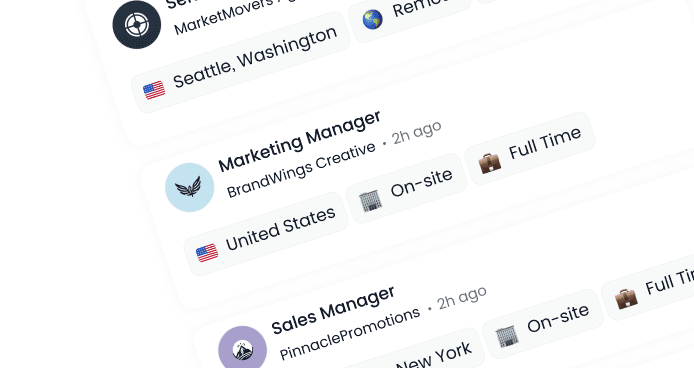Onboarding vs Preboarding – Understanding the Difference and Why It Matters in 2025?
Published:
July 9, 2025
All
Employer Branding
Recruiting Tips
Candidate Experience
Think onboarding starts on Day 1? Think again.
Introduction
Did you know that a survey carried out showed around 80% of new recruits said they would leave the job if the onboarding was not adequate; this was even more true for remote employees. Furthermore, more than 60% have already made a decision not to stay long-term even before day one on their job. This goes to show how a candidate’s experience between offer acceptance and their first day—aka preboarding—is now just as critical as onboarding.
So, what’s the real difference between onboarding and preboarding, and why should you care? Let’s break it down in a way that makes sense and helps you retain the talent you’ve worked so hard to attract.
What is Preboarding?
Preboarding is the process that kicks in after a candidate accepts the job offer and before their first day. Think of it as the “warm-up” phase of the new hire experience.
Instead of leaving new hires in the dark for two weeks, preboarding gives them a sneak peek into your company culture, prepares them logistically, and builds excitement.
What Preboarding Typically Includes:
Sending a welcome email or swag box
Giving early access to the employee portal or Slack
Sharing the preboarding checklist (e.g., forms, IT setup)
Introductory videos from the team or leadership
An outline of what to expect on day one
It’s not about training yet—it’s about connection.
What is Onboarding?
Onboarding officially starts on the employee’s first day. This is where you transition new hires into their roles, equip them with tools, align expectations, and immerse them in company culture.
Key Elements of the Onboarding Process:
Orientation sessions
Policy and compliance training
Role-specific training and job shadowing
Setting goals and performance metrics
Ongoing feedback and 30-60-90 day check-ins
A well-run employee onboarding process doesn’t stop after one week. Top-performing companies extend onboarding over 90 days or more to build long-term engagement.

The Key Differences Between Onboarding and Preboarding
Feature | Preboarding | Onboarding |
|---|---|---|
When it happens | After the job offer, before the start date | Starts on Day 1 and continues for weeks/months |
Focus | Emotional readiness and logistical prep | Functional training and cultural immersion |
Tools used | Emails, videos, task checklists | LMS, HR systems, coaching frameworks |
Goal | Reduce anxiety and build a connection | Speed up productivity and retention |
Understanding the difference between onboarding and preboarding helps HR teams create a seamless hiring journey that avoids gaps or confusion.
Why Both Stages Are Critical in 2025
Employee expectations have evolved. Ghosting, early turnover, and low engagement aren’t just buzzwords—they’re real risks.
According to Gallup, only 12% of employees say their organization does a great job onboarding. Companies that invest in preboarding and onboarding best practices can boost new hire retention by up to 82% and productivity by over 70%.
In a competitive hiring market, those stats speak for themselves.
HR Onboarding Tips – Optimize Both Stages
Build a Preboarding Workflow
Use a preboarding checklist to automate repetitive tasks like paperwork, system access, and team intros. Keep it light, friendly, and friction-free.
Make It Personal
Send a welcome video from the CEO. Introduce the team with short bios or fun facts. Employee onboarding doesn’t have to feel cold or generic.
Start With Outcomes in Mind
Whether you’re onboarding interns or senior managers, be clear about what success looks like in the first 30, 60, and 90 days.
Provide Early Wins
Give new hires tasks they can complete before day one—like filling out a preferences form or choosing their workstation setup. It makes them feel like they are part of the team already.
How DigitalHire Streamlines Your Preboarding Process
If this all sounds like a lot to manage manually, it is.
That’s where a platform like DigitalHire steps in. DigitalHire helps companies automate and personalize the preboarding process for new employees, saving time while boosting engagement.
It also enables a smooth transition from the offer letter to day one. And when integrated into your onboarding new hires process, it creates a unified and modern experience your candidates will remember.
Final Thoughts – Don’t Let Day One Be a Blind Date
Onboarding vs Preboarding: What’s the Difference? It’s not just semantics—it’s strategy.
Get preboarding right, and your new hires show up excited, prepared, and confident. Nail onboarding, and they stay longer, contribute faster and become advocates for your brand.
So, take a moment today to review your process.
Or better yet—start using tools like DigitalHire to build a smarter, faster, and more human onboarding journey from start to finish.
FREE JOB POST
Looking to fill a position quickly? Post your job for free and reach top talent today!




